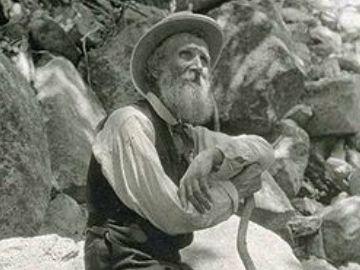
Section Branding
Header Content
Book Explores Muir's Southern Journey
Primary Content

John Muir, often called the "Father of National Parks" is well-known for his adventures and activism in the Western US.
But, it was a bug bite that he likely got in Savannah that sent him there.
In honor of Earth Day next week, GPB's Orlando Montoya spoke to an author who wrote about Muir's life-changing trek through the South.
Whitworth University history professor James Hunt wrote about the importance of Muir's 1867 trip to the Gulf of Mexico in a new book, Restless Fires.
Hunt says the Scotland native's studies at college in Wisconsin pushed him to explore a world he only had read about in books.
Muir loved geology and wanted to expand his knowledge.
"He'd also developed a very strong passion in botany at the University of Wisconsin, Madison," Hunt says. "And he was restless. He was really trying to figure out what he wanted to do with his life."
Young Muir set out on foot through the post-Civil War South starting in Kentucky.
His destination was South America and Africa.
But first, he encountered plants in the South including ones that he said bit and scratched.
He called them "cat plants" and by the time he made it to Augusta, he was ready to get to the coast as quickly as possible.
"This flat stretch he was doing about 40 miles a day," Hunt says. "He usually averaged 18 to 23 a day.”
Muir arrived in Savannah flat broke.
Waiting for wired money from back home, Muir decided to camp for six-nights in the seclusion of the beautiful but bug-infested Bonaventure Cemetery.
Hunt says the graveyard had a profound impact on the soon-to-be conservationist.
"He was enchanted with the place," Hunt says. "But it became even more important later on when he contracted malaria. As a result of the sickness, he changed his plan."
Hunt says Muir could have gotten malaria anywhere in the days before he arrived Florida -- but it likely was from being homeless in Savannah.
Muir came to new ideas about life and death in the cemetery.
And because he was too sick to go to the Amazon or Congo, he opted for the Yosemite Valley instead.
That's where Muir became a hero to contemporary and later generations of environmental advocates.
"He literally believed that everybody needs beauty as well as bread," Hunt says. "Places to play in as well as to pray in. Where nature can heal, give good cheer and give strength to body and soul."
Muir's trip through the South including drawings he made while here and his impressions on the cities he visited like his favorite Athens are detailed in Hunt's book published by Mercer University Press.
Tags: Florida, Athens, Savannah, sierra club, South America, environmental, National Park Service, GPBnews, Gulf of Mexico, orlando montoya, Wisconsin, earth day, University of Wisconsin, geology, Africa, malaria, James Hunt, Whitworth University, Restless Fires, John Muir, Scotland, Bonaventure Cemetery, botany
